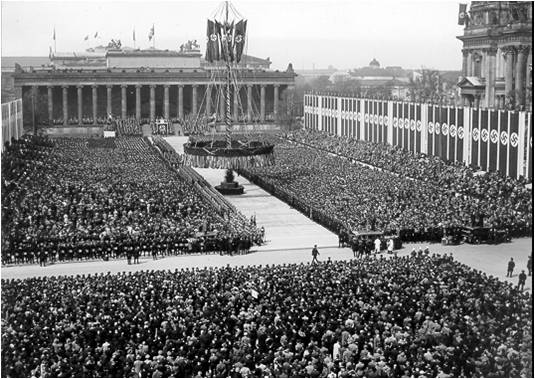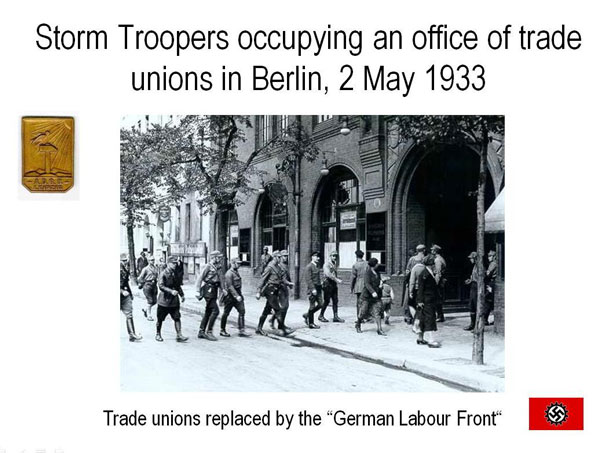With the Reichstag Fire Decree and the following persecution, many activists of the workers movement were arrested or forced to go underground, but the trade unions still existed in the spring of 1933, and Hitler felt that the majority of the capital’s population, Berlin’s workers, were against him. The Nazi Party did not get more than 31.3 % in Berlin in the March elections, as opposed to the national average of 43,9 %.

Hitler therefore pursued a double strategy: he declared the First of May, traditionally a day of workers’ rallies, to be an official holiday called “Day of the German Labour”, and organized huge demonstrations and celebrations. At the same time, he commanded the Storm Troopers to occupy all offices of the trade unions the following day. Their leaders were taken to concentrations camps and their property was confiscated. The “German Labour Front”, a Nazi organisation that comprised employers and employees, thus symbolizing the “deutsche Volksgemeinschaft”, the ‘German national or ethnic community’, replaced the trade unions. Members of the trade unions automatically became members of this organisation, which financed propaganda programs using the property of the trade unions.

